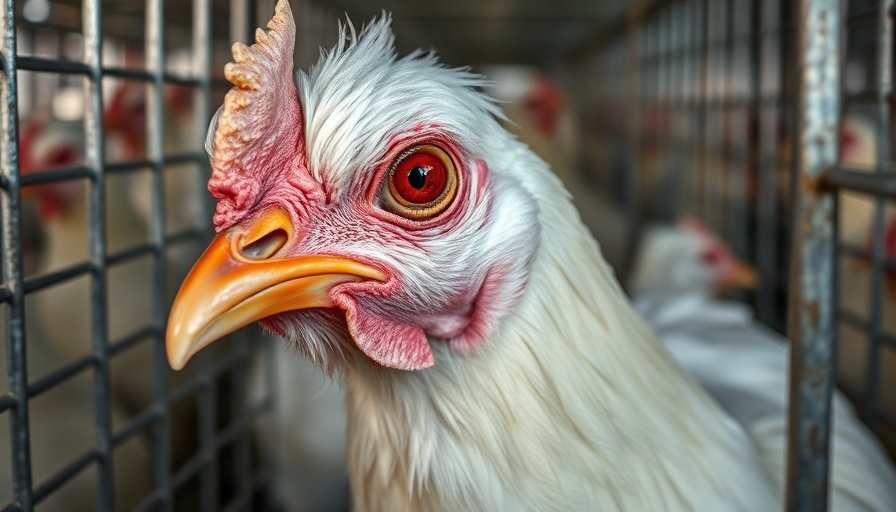
The Growing Threat of Avian Influenza
As of early 2025, over 30 million birds have been culled across the United States to contain the outbreak of avian flu, a devastating reality linked to the unforgiving conditions of factory farming. The USDA reports that a staggering 74% of these birds came from battery cages, underscoring a critical public health concern. The crammed and unsanitary living circumstances not only endanger the health of the poultry themselves but also pose a significant risk to human populations.
How Factory Farming Facilitates Pandemics
Factory farming creates an environment that can be a breeding ground for diseases, including avian influenza. The current U.S. strategy for combatting the virus is largely centered on culling entire infected flocks through methods such as ventilation shutdown plus (VSD+), which are widely criticized as inhumane. This approach reflects a broader systemic issue: the industrialized meat sector prioritizes profit over welfare, resulting in human and animal suffering alike.
A Global Perspective: Lessons from Other Countries
Interestingly, the U.S. is not the sole player in the fight against avian flu. While Canada resorts to culling, it does so with a more humane approach, preventing supply chain disruptions by not overstocking animals. Countries like China, France, and South Korea have successfully implemented vaccination programs that both prevent the spread of the virus and minimize human exposure. These examples highlight the possibility of alternative, less cruel methods that the U.S. has yet to adopt.
The Case for Vaccination in U.S. Poultry
The reluctance to introduce vaccination against avian flu in the U.S. stems mainly from opposition within the chicken meat industry. This sector has already suffered billions in losses, with taxpayer-funded bailouts attempting to cover the fallout. However, lessons from other countries show that vaccinating poultry could significantly reduce the severity and spread of outbreaks, paving the way for stabilization of consumer prices while reducing suffering.
What Can Be Done? Taking Action Now
Though vaccines are not a panacea, their ability to lessen the viral load carried by birds makes them an essential tool in managing avian flu. Alarmingly, out of the federal $1 billion avian flu response budget, a mere $100 million is dedicated to vaccine research. With most potential solutions sidelined by insufficient funding and political resistance, it is vital for the public to advocate for more humane and effective strategies in animal agriculture to safeguard both public health and animal welfare.
 Add Row
Add Row  Add
Add 




 Add Row
Add Row  Add
Add 

Write A Comment